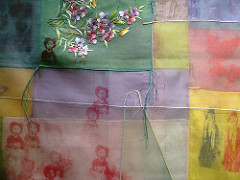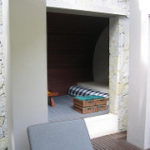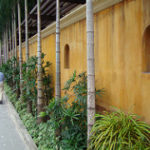Collecting Asian Art: “Porcelain”
Collecting Asian Art: “Porcelain”
Porcelain is an integral thread of the material of Chinese culture. In the 14th century, even though Europeans were nevertheless consuming from minimal-fired earthenware or wooden dishes, the Chinese had developed the first underglazed porcelain. They have been employing cobalt, initially imported from Iran during the Yuan period (1279-1368 A.D.), to include outstanding shades of colour, from pale blue to almost black, to translucent white wares. As soon as Marco Polo brought back a number of samples, the world couldn’t―and even now can’t―get enough of it.
Copper is the other simple color of underglaze decoration. It delivers hues that selection from the very first muddy brown of the early Ming dynasty to the correct red of the 18th century. “Peach bloom” or “unripened peach” is a greenish tinge developed when copper has oxidized.
Overglaze decoration was carried out in a variety of types of enamels and named famille rose (a French expression that means “pink household”). There is famille verte (green), famille noire (black), and famille jaune (yellow). Pieces with a black background enameled in famille rose or in combinations such as rose-verte (pink and green) was a late-17th-century innovation. It is usually agreed that overglaze enamel decoration reached its height in the 18th century.
The Japanese at this time have been also building porcelain, mainly in the form of ceremonial objects like the tea ceremony. The popular Satsuma porcelain you hear so much about was a 17th-century innovation, adopted from Korea and then greatly improved on. By the Meiji time period (1868- 1912) the Japanese had taken enameling to a new level. Substantial fired and reflecting the Japanese traits of meticulousness, precision and definition, these porcelain paintings were extremely conceptual. The artwork of Japanese enameled porcelains peaked between 1880 and 1920, whereas Chinese porcelain was at its ideal between 1710 and 1810.
In the final couple of many years, especially gorgeous and particularly rare porcelains have become inordinately worthwhile. In March 2008, we offered a huge Hongwu vase throughout Asia Week in New York City for $ 1.2 million. The good news is, there is still a tremendous sum of attractiveness to be found in inside an reasonably priced price variety. Slight flaws will deliver the price way down, and yet the things are even now extremely collectible and constantly value in worth.
Usually speaking, flaws on the glaze occur most frequently in the course of firing. Whilst a number of overglaze colors can theoretically be fired at the same time, far more usually than not they are fired individually. If gilded, the gold was the last to go on. It is the initial to put on off.
When evaluating a distinct piece of porcelain, start off by viewing it as although it had been excellent and figure out what value perfection. (Accessibility our on the web catalogs and the prices recognized for every single auction to use as a reputable price tag guidebook.) From there, adjudicate the flaws in the piece and judge the worth in its recent situation.
My very own view is that quite fine porcelain pieces with some harm or restoration are excellent buys nowadays. A Ch’ien Lung bowl, for instance, in excellent situation would be out of the attain of most people. But if you locate 1 with a small chip that was expertly repaired and the bowl would make a lovely addition to your assortment, purchase it. They are not creating them like that any longer and the odds of it holding its worth, even appreciating, is tremendous.
As for copies, you can spot them pretty effortlessly. The decoration is normally as well meticulously drawn. Because porcelain does not present a whole lot of put on, you will recognize right away if a piece looks like somebody has taken fine steel wool and scrubbed it, place it up on a buffing wheel or experimented with to tone it down with chemical compounds.
Japanese porcelain from the Meiji time period and notably from the Kutani (9 rivers 9 Rivers?) area has by no means genuinely been successfully reproduced the repros that do exist are noticeably inferior. Also, number of reproductions come out of Japan these days.





















Leave a Reply